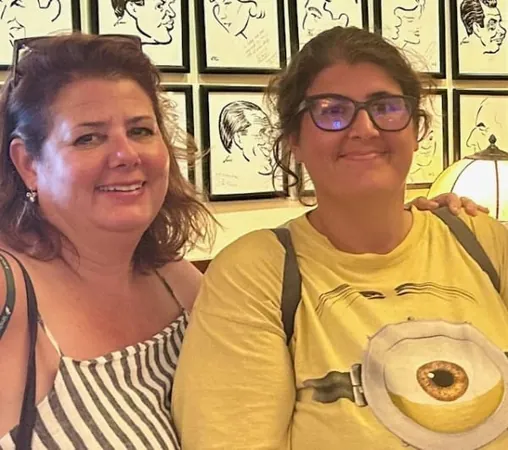
Breaking Barriers: New Consensus Recommendations for Eyelid Myoclonia in Epilepsy
2024-11-22
Author: Sarah
In a heart-wrenching journey that reflects the struggles many families face with epilepsy, 8-year-old Samantha (Sam) Short was diagnosed with the condition in 2003. Initially, her doctors suspected she only experienced absence seizures, leaving the Short family desperate as they navigated through a “merry-go-round of medications” for five long years, with no effective treatment in sight. "We were getting very frustrated," said Tracey Short, Sam’s mother.
Fast forward to 2019; the Mugar family faced a similar situation when they noticed their 2-year-old daughter exhibiting odd, rolling eye movements. Jonathan Mugar, desperate for answers, reached out to several global medical experts for opinions on his daughter's EEG readings. Ultimately, both Samantha and Mugar’s daughter received the same diagnosis: epilepsy with eyelid myoclonia, or EEM.
EEM, formerly known as Jeavons syndrome, is characterized by a trifecta of symptoms: seizures triggered by closing the eyes or photosensitivity, eyelid myoclonia, and the presence of absence seizures, predominantly appearing in females between the ages of 3 and 12. A startling fact—less than half of individuals diagnosed with EEM have a family history of epilepsy, and recent studies indicate that this type of epilepsy may be more common than previously thought, despite its classification as ‘rare’.
The reality of EEM has garnered increased attention lately, leading to the publication of important consensus guidelines in the journal *Epilepsia*. An international panel, including neurologists, caregivers, and patients like Mugar, collaborated to establish clearer diagnostic and management strategies for EEM. A staggering 96% of these experts agreed that eyelid myoclonia, whether or not combined with absence seizures, is imperative for diagnosis.
Treatment and diagnosis of EEM can be particularly challenging. EEM is often mistaken for muscle artifacts on EEG readings, causing considerable delays in diagnosis—sometimes by as much as ten years. Tracey Short recalls that Sam's eyelid myoclonia went unnoticed until her occupational therapist identified it when she was 5. Sam was ultimately diagnosed only after she had her first generalized tonic-clonic (GTC) seizure at age 8.
The impairment caused by EEM varies widely among individuals. While some, like Mugar's daughter, have reported success with arts and crafts and dream of growing up to be firefighters, Sam, who is now 29, faces significant challenges. She struggles with social interactions and other fundamental skills, such as reading and mathematics, while also being unable to drive due to her condition.
Among the treatment strategies discussed, valproic acid emerged as the most favored medication, alongside levetiracetam and lamotrigine. Although there’s no clear consensus regarding other therapies, many doctors noted the potential of the ketogenic diet and specialized eyeglasses for patients triggered by light sensitivity.
Despite the lack of definitional clarity, one consensus remains strong: awareness and understanding of EEM must improve among medical professionals. Dr. Philippe Gélisse, a leading epileptologist, emphasized that eye-related symptoms can often be undiagnosed, leaving families in uncertainty and frustration.
Both the Short and Mugar families share a sense of hope seeing increased attention towards EEM and the potential for improved treatment options. "It is massively helpful for caregivers to have advocates discussing EEM and gathering information," Mugar remarked.
As more research unfolds, particularly around genetics and treatment efficacy, the path towards understanding and managing EEM continues to grow. In a world where epilepsy remains surrounded by stigmas and misconceptions, these new guidelines may pave the way towards a brighter future for countless individuals impacted by this condition.


 Brasil (PT)
Brasil (PT)
 Canada (EN)
Canada (EN)
 Chile (ES)
Chile (ES)
 España (ES)
España (ES)
 France (FR)
France (FR)
 Hong Kong (EN)
Hong Kong (EN)
 Italia (IT)
Italia (IT)
 日本 (JA)
日本 (JA)
 Magyarország (HU)
Magyarország (HU)
 Norge (NO)
Norge (NO)
 Polska (PL)
Polska (PL)
 Schweiz (DE)
Schweiz (DE)
 Singapore (EN)
Singapore (EN)
 Sverige (SV)
Sverige (SV)
 Suomi (FI)
Suomi (FI)
 Türkiye (TR)
Türkiye (TR)